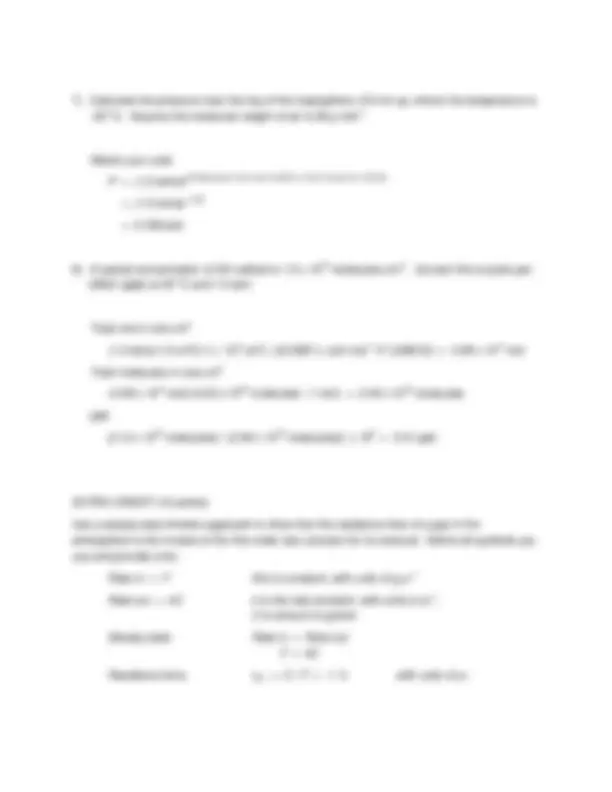



Study with the several resources on Docsity

Earn points by helping other students or get them with a premium plan


Prepare for your exams
Study with the several resources on Docsity

Earn points to download
Earn points by helping other students or get them with a premium plan
Community
Ask the community for help and clear up your study doubts
Discover the best universities in your country according to Docsity users
Free resources
Download our free guides on studying techniques, anxiety management strategies, and thesis advice from Docsity tutors
The answers and explanations for exam 1 of chemistry 331. Topics covered include thermodynamics, gas processes, and fuel production. Short answer questions ask for the definition or identification of various processes and substances, while calculation questions involve the use of bond energies and the calculation of pressure and concentration. Useful for students preparing for exams, quizzes, or assignments in thermodynamics and chemical processes.
Typology: Exams
1 / 3

This page cannot be seen from the preview
Don't miss anything!


September 29 th, 2007 Chemistry 331 50 minutes Exam 1 KEY
Possibly Useful Information
t (^) res = C / F P = P 0 e -(MW x gh / RT)^ PV = nRT Efficiency < 1 – (T (^) c / T (^) h) R = 0.0821 L atm mol -1^ K-1^ OR 8.314 J mol-1^ K-
Part A : Short answer, 8 points each. Six sentences or less!
Coal gasification
Respiration
Fluidized bed combustion
Primary energy use
Photosynthesis
Fractional distillation
Cracking
Endothermic
Making gasoline by heating higher boiling fractions in the absence of air
Reacting coal with hot steam to make methane
The biological conversion of organic carbon to CO (^2)
Energy obtained directly from a fuel source Enhanced recovery
This is sand loaded with an oily (fossil fuel) substance called bitumen. It is either excavated and extracted with steam or it is softened in the ground by steam injection and then pumped out. After extraction, it is subjected to fractional distillation.
A zero-order chemical process is one whose rate does not depend on the concentration of any chemical species. Gas influx to the atmosphere from human sources is not dependent on the atmospheric concentration of the gas but rather the rate at which we use energy.
The model equates the solar energy absorbed by the earth with the energy emitted by the earth (i.e., no net energy gain). The solar flux is the energy radiated through space by the sun, and it is mainly UV and visible wavelengths. Some portion of it is intercepted by earth. About 30% of that is reflected due to earth’s albedo. The earth warms and emits heat. The wavelengths it emits depend on temperature and are mainly in the IR.
How much of it is being put into the atmosphere; what its residence time is; how strongly it absorbs thermal IR radiation; whether the radiation it absorbs lies in the atmospheric
Part B : Calculate this! 20 points each. Show all work.
Bonds broken: 1DC-C + 5D (^) C-H + 1DC-O + 1DO-H + 3DO=O (347) + 5(410) + (360) + (460) + 3(494) = 4,699 kJ Bonds formed: 4DC=O + 6D (^) O-H 4(799) + 6(460) = 5,956 kJ Enthalpy: (4,699 - 5,956) = -1257 kJ
So, [(2 mol CO 2 ) / 1257 kJ] x 1000 = 1.59 mol CO 2 per 1,000 kJ